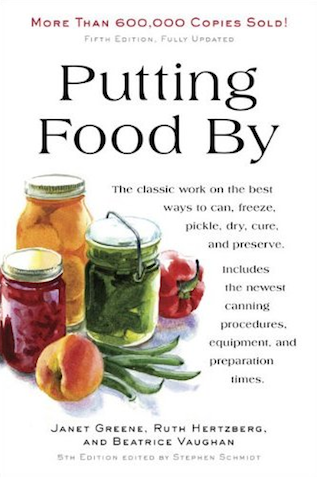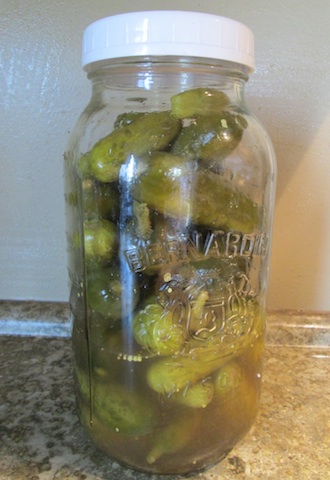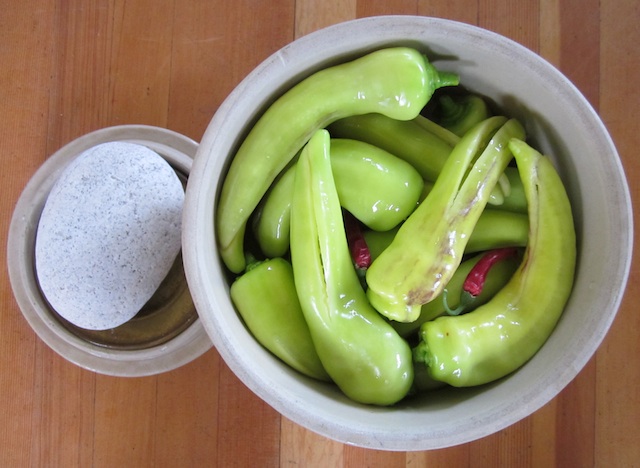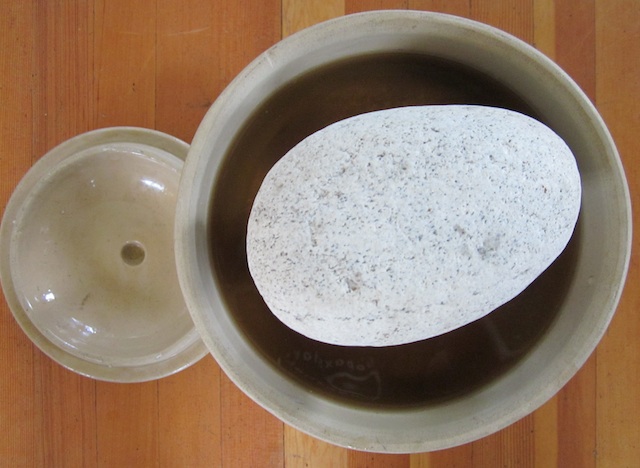
Now doesn't that look delicious! These cucumbers have been pickling for only three days. We tried them and they are great! This recipe is so easy anyone can make their own pickles.
I have just found a book by Janet Greene called Putting Food By. It is all about preserving food by canning, freezing, pickling, drying, and curing. It includes the newest canning procedures. It is an excellent book and I highly recommend it for anyone new to food preserving.

This is an excellent book on preserving food.
Crock Pickles
This recipe is based on Little Cucumber Crock Pickles found in Putting Food By. This is a very easy recipe for someone new to pickling. I have changed the recipe to be safe for someone on the Specific Carbohydrate Diet. The raw cider vinegar adds some live culture to these pickles.
3-4L organic raw cider vinegar, enough to cover the cucumbers
1/3c local raw honey
1/2c organic whole mustard seeds or 1/4c fermented whole seed mustard
1c sea salt
5kg of organic pickling cucumbers, small and medium size
4-8 heads garden fresh dill flower heads (optional)
4-6 garden fresh grape leaves (optional)
1-2 heads of organic garlic, peeled (optional)
2-3 whole hot red peppers (optional)
Take a clean 10L crock and lay the grape leaves, garlic, hot peppers and dill flower heads on the bottom of the crock. In the crock, mix the salt, honey, mustard seeds and half of the vinegar. Add the well washed cucumbers. Add enough vinegar to cover all the cucumbers. Use a plate and granite stone to weigh down the cucumbers in the solution. Nothing should be exposed to air. After a day, pour 1/2c to 1c of sea salt on top of the plate and stone. You can start eating the pickles in just a few days. If you add more pickles later add more salt to the top of the plate and rock.

Here is the crock with the plate, stone and salt weighing down the pickles in the pickling solution. The more salt you use the longer the pickles will last.
The raw cider vinegar does have a live culture, but I am not sure if the high salt content will kill the live culture. Nevertheless, these crock pickles will not be as nutritious as lacto-fermented pickles. If you are trying to improve your gut health and want to ferment your pickles, here is a recipe for Lacto-Fermented Horseradish Dill Pickles. Eat lacto-fermented pickles within two months or they may go soft.

These pickles came out of the crock. Making pickles will save money and are better than commercial pickles.
Homemade pickles will be of better quality than any commercially prepared pickles. Making your own pickles will help you avoid additives that are found in many brands of commercial pickles. Also, you will produce less garbage and less recycling. If you are interested in reducing your garbage and recycling please read Solidarity… Of a Sort.
Frugal Tip: After you finish eating the pickles, do not throw out the pickling juice. Reuse the pickling juice for the vinegar portion of homemade salad dressing. Pickling juice can also improve the flavor and texture of home canned vegetables.






